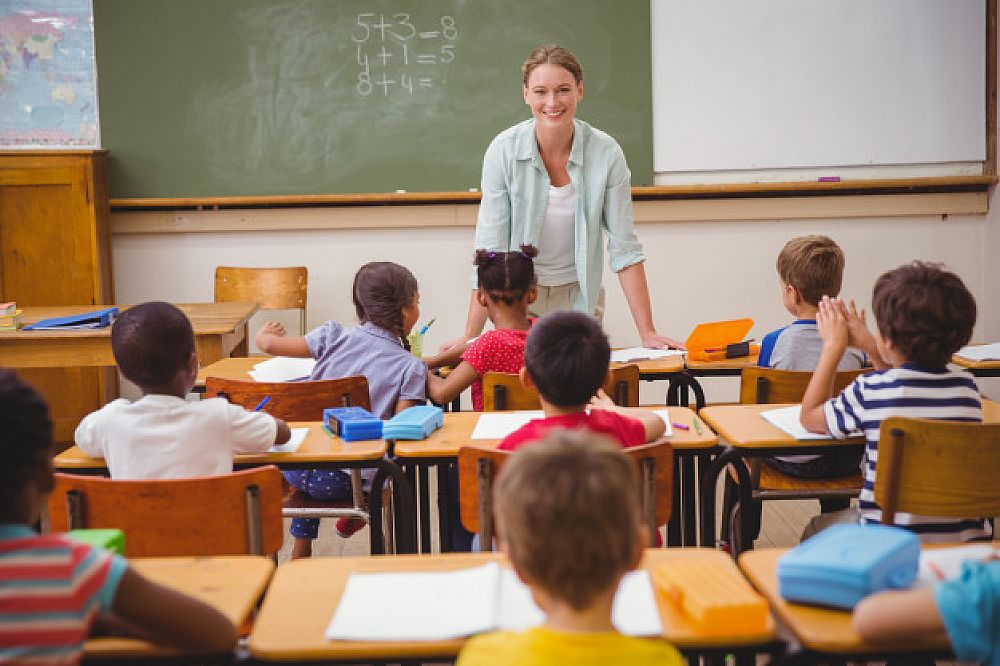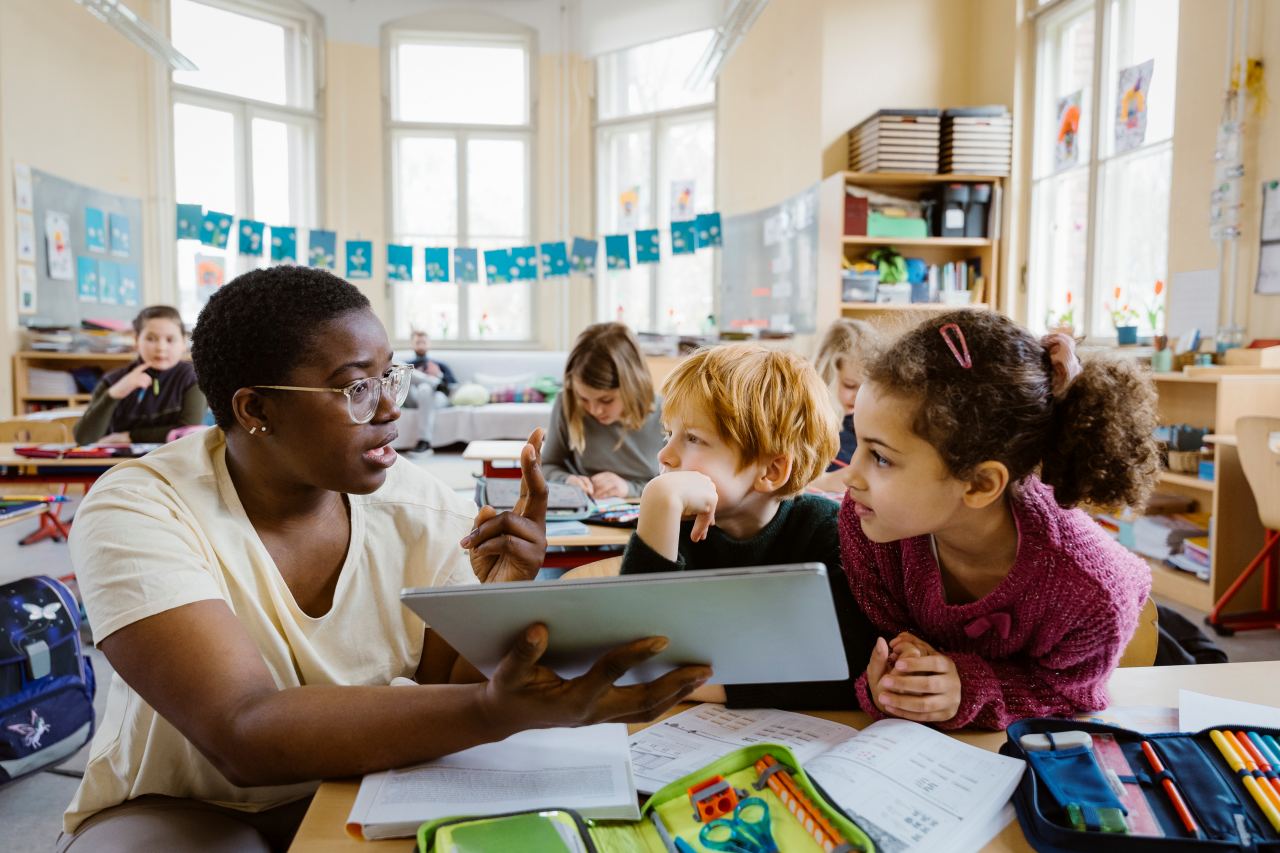Expert Tutors Offering Primary Science Tuition Singapore for All Grades
Expert Tutors Offering Primary Science Tuition Singapore for All Grades
Blog Article
A Comprehensive Overview to the Numerous Discovering Techniques in Main Science Guideline
The expedition of varied discovering techniques in primary scientific research instruction offers a chance for instructors to improve student interaction and comprehension considerably. By examining hands-on knowing methods, inquiry-based methods, and collective methods, we can determine effective practices that accommodate numerous finding out styles. Additionally, the integration of technology and differentiated guideline plays a critical duty in fostering a comprehensive environment. Nonetheless, the inquiry continues to be: just how can these techniques be effectively executed in the class to optimize their impact? The solution hinges on a more detailed evaluation of each method and its ramifications for mentor scientific research.

Hands-On Learning Techniques
Hands-on understanding strategies play a critical role in key science direction, involving pupils in energetic exploration and experimentation. These approaches enable learners to engage directly with phenomena and products, promoting a much deeper understanding of clinical concepts. By utilizing manipulatives, versions, and real-life experiments, teachers develop a setting where trainees can observe, hypothesize, and evaluate their concepts.
Such methods not just improve understanding yet also grow vital thinking and problem-solving skills. When pupils take part in activities like developing simple devices, growing seeds, or carrying out chemical responses, they are encouraged to ask concerns and seek answers with their own monitorings. This experiential strategy aids to demystify intricate scientific principles, making them much more easily accessible and relatable.
In addition, hands-on knowing promotes cooperation amongst peers, as pupils typically work in teams to perform experiments or share findings. This synergy not just improves their learning experience yet also creates vital social skills. Eventually, incorporating hands-on strategies in main scientific research instruction fosters a long-lasting love of knowing and interest about the all-natural world, laying a strong structure for future scholastic quests in scientific research and past.
Inquiry-Based Learning
Inquiry-based understanding is an instructional technique that encourages pupils to ask inquiries, check out phenomena, and construct their own understanding of scientific ideas. This method shifts the focus from typical teacher-led direction to a more student-centered experience, where learners take the campaign in their academic trip. By cultivating interest, inquiry-based discovering promotes much deeper interaction with the material, permitting trainees to discover subjects in a significant context.
In method, this method usually includes hands-on experiments, observations, and critical thinking tasks that straighten very closely with the scientific approach. Students are encouraged to formulate theories, style examinations, and evaluate data, which grows essential abilities such as analytic and analytical thinking. The function of the educator in this framework is to promote expedition, leading students through the query process while encouraging independent thought and cooperation.
In addition, inquiry-based knowing nurtures a sense of ownership over the learning process, motivating pupils to seek understanding actively. This method not only boosts understanding of scientific concepts yet also fosters a lifelong love for discovering, gearing up trainees with the skills necessary to browse an increasingly complicated world.
Collaborative Knowing Approaches
Joint discovering strategies equip students to take part in meaningful interactions with peers, fostering a common obligation for their instructional end results. In key science instruction, these techniques urge learners to collaborate to explore clinical ideas, fix issues, and conduct experiments (primary science tuition Singapore). By taking part in group activities, trainees can leverage varied perspectives, permitting richer understanding and retention of clinical knowledge
One key aspect of collective understanding is the focus on interaction skills. Trainees have to articulate their ideas, listen actively to others, and negotiate concepts, every one of which are vital competencies in both academic and real-world contexts. This social communication not only improves their understanding of scientific concepts yet likewise promotes synergy and dispute resolution skills.
When students see the value of their payments within a team, they are much more likely to take possession of their understanding journey. In general, including joint knowing techniques in primary scientific research guideline cultivates a dynamic knowing setting that prepares students for future scholastic and social challenges.
Technology Combination in Science
The assimilation of modern technology in main scientific research instruction boosts learning experiences by giving innovative tools and sources that sustain different training approaches, including this article joint discovering - primary science tuition Singapore. Using digital platforms, simulations, and interactive applications allows pupils to engage deeply with scientific concepts, facilitating a more hands-on technique to knowing
Digital laboratories, for circumstances, make it possible for students to conduct experiments safely and effectively, advertising inquiry-based understanding. These devices can imitate real-world scientific circumstances, permitting students to visualize complex procedures that would be difficult to duplicate in a standard class setting. Modern technology promotes communication and collaboration among pupils, as they can share searchings for and function with each other on projects via on-line systems.
In addition, multimedia discussions and educational videos can improve lessons by satisfying varied learning designs, making abstract ideas much more available. Data evaluation devices likewise encourage trainees to collect and translate clinical data, strengthening critical believing skills. On the whole, the tactical unification of innovation in primary scientific research guideline not only boosts involvement but likewise prepares pupils for a technologically innovative culture, furnishing them with necessary skills for future scientific ventures.
Distinguished Direction Methods
Differentiated direction methods are necessary for dealing with the varied demands of students in primary scientific research education and learning. These techniques enable educators to customize their mentor techniques to fit varying capacities, passions, and discovering styles within the class. By utilizing distinguished direction, instructors can produce a comprehensive environment that fosters engagement and enhances understanding of clinical ideas.
One reliable strategy is to make use of flexible grouping, which permits trainees to collaborate with peers at comparable ability levels or with differing perspectives. This approach encourages peer discovering and advertises critical reasoning. Furthermore, offering options in assignments can encourage students, enabling them to pick projects that reverberate with their passions while still satisfying curricular goals.
Additionally, integrating tiered tasks is an additional important strategy. check that Deliberately jobs with varying levels of complexity, instructors can make sure that all trainees are suitably tested, no matter their proficiency. Using formative evaluations to gauge recognizing further makes it possible for instructors to readjust their training techniques dynamically, making sure that each learner receives the assistance they need.
Ultimately, applying set apart direction techniques in main scientific research education and learning not only enhances student knowing results but also cultivates an enthusiasm for science, preparing pupils for future academic pursuits.

Conclusion
In summary, efficient main scientific research guideline demands a diverse strategy that includes hands-on learning, inquiry-based approaches, and collective strategies. The combination of modern technology and distinguished instruction further caters to diverse discovering styles, fostering an atmosphere favorable to expedition and critical thinking.
The exploration of varied discovering click over here methods in key scientific research instruction provides a possibility for instructors to enhance trainee engagement and comprehension significantly.Hands-on learning methods play a critical role in main scientific research guideline, engaging students in energetic exploration and trial and error.Inquiry-based knowing is a training technique that encourages students to ask inquiries, check out sensations, and create their own understanding of scientific concepts.Collaborative discovering approaches empower trainees to engage in purposeful interactions with peers, promoting a shared responsibility for their instructional end results. Overall, incorporating collaborative knowing approaches in main scientific research instruction grows a vibrant discovering setting that prepares pupils for future scholastic and social obstacles.
Report this page